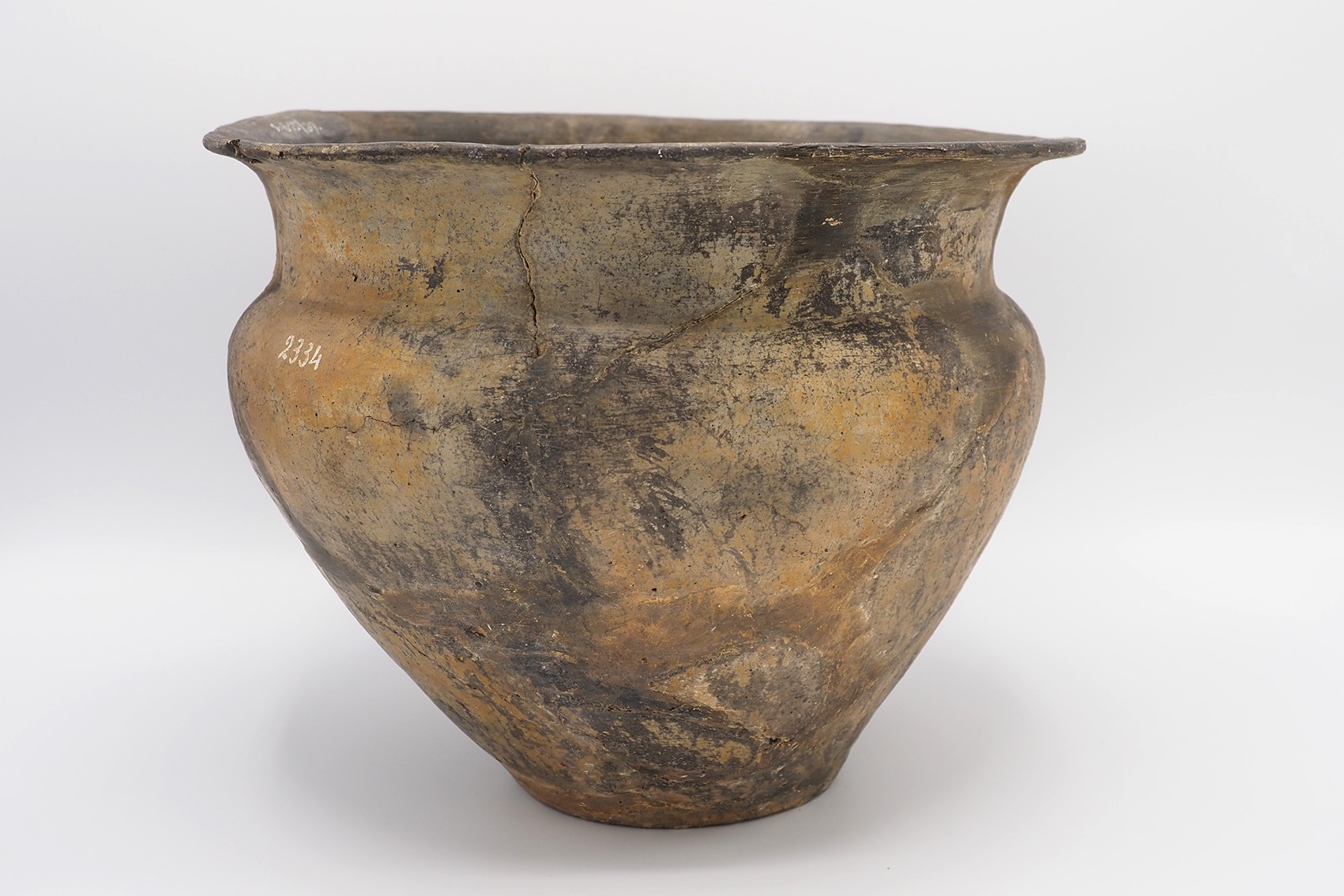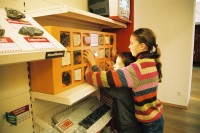Großer weiter Eitopf mit abgesetztem Trichterhals und horizontal ausbiegendem Rand. Das Stück ist offenbar beim Brennprozess etwas verzogen. Eitöpfe gehören zu den gängigen Grabgefäßen der bronzezeitlichen Lausitzer Kultur.
Das bei seiner Auffindung stark zerscherbte Stück stammt aus der nördlichen Gefäßsetzung des Doppelgrabs von Lieske (vgl. IV 0052).
en

